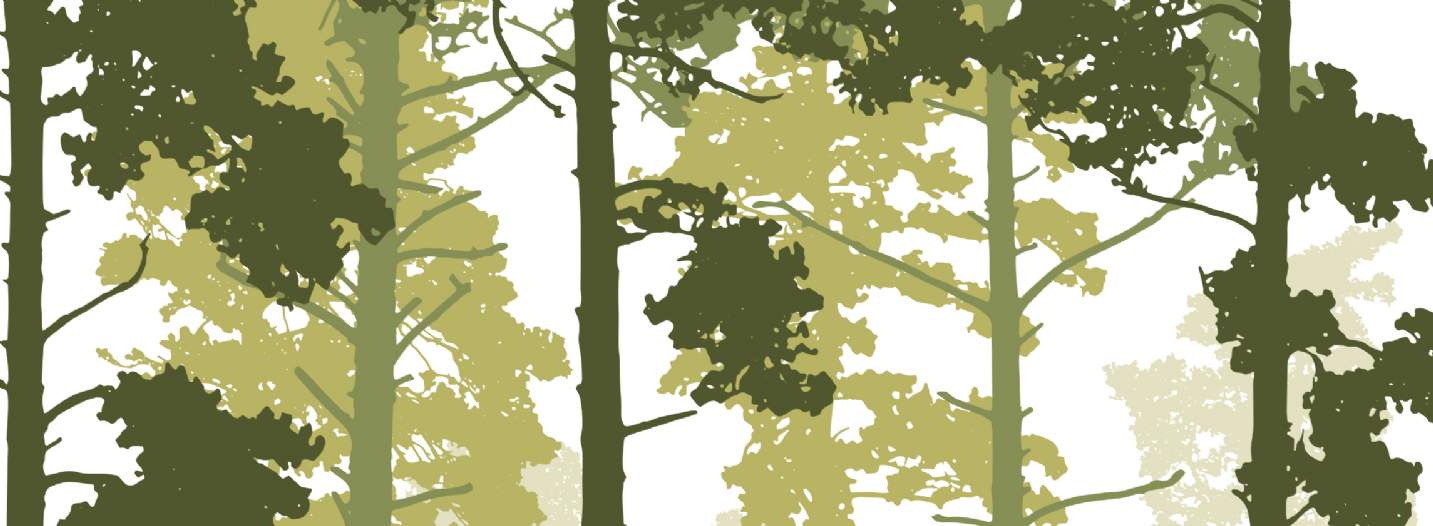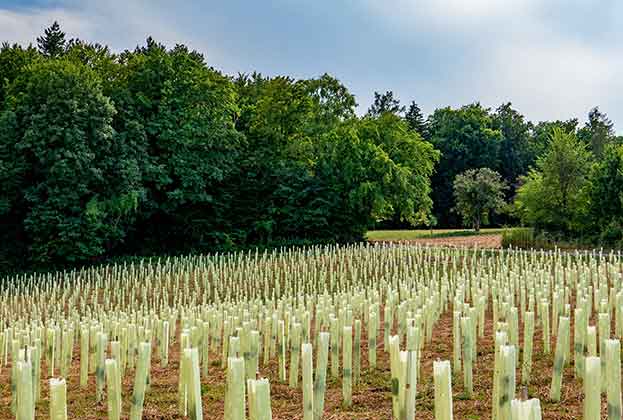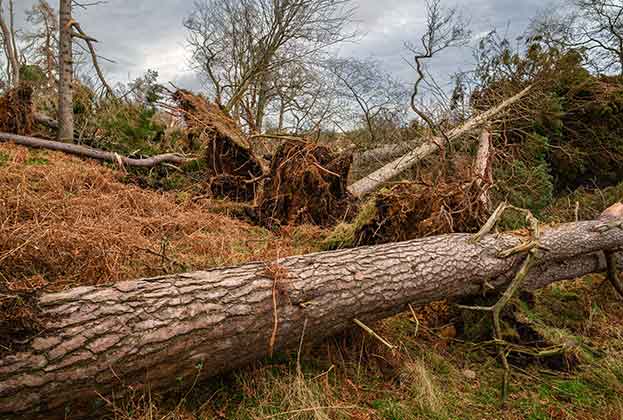In this Spotlight, we report on the performance of the UK forestry investment market during the 2023 forest year (1/10/22–30/9/23). We review the targets and incentivisation for tree planting and focus on the impacts, mitigation and risk of climate change on the UK’s forests and woodlands
Forestry investment analysis for 2023
A quieter year for forestry investment, but the demands on trees continue
The demands on woodlands and forests are increasing due to the expectations by government and the public that they provide a solution to climate change, improve biodiversity, produce timber for new homes and contribute positively towards wellbeing.
Furthermore, COP26 (2021 United Nations Climate Change Conference) showed that the focus of future timber production should be on plantation forests. This is a clear justification for investment in productive timber, and in part, has resulted in strong demand leading to rising commercial forestry capital values in recent years. However, the commercial forestry market was less active in 2023 and as a result, for the forest year 2023, we report on fewer transactions. This reduction in activity led to a contraction by volume and value of the market for the first time since 2019 (figure 1). At the time of writing, our analysis suggests an increase in market activity for the 2024 forest year to date, so why the pause during 2023?
It became clear in 2021 that rising inflation would significantly influence investment, with a series of rapid rises not seen since 1990 – the first occurring in December 2021, followed by repeat rises to the peak of 5.25% in August 2023. This period included the market shock from the mini-budget in September 2022 coinciding with the start of the 2023 forest year, leading to a marked drop in market activity. Q4 2023, which is out of the 2023 forestry reporting year, saw falling inflation and no interest rate rises, facilitating a return of confidence to forestry and other investment classes.
Forestry market update
Total market – area and value
Our research on the UK commercial forestry market is based on our database of all forest sales over 50 hectares including, where we are aware, off-market transactions.
2023 follows three years of exceptional growth in forestry transactions, culminating in a record-breaking year in 2022 when just over £300 million of UK forestry transacted. In contrast, the total value of the UK forestry investment market contracted by -68% to just under £96 million during 2023. According to our research, this is the lowest total value of commercial forestry sold since 2016, when the total value traded was £90.5 million.
2023 follows three years of exceptional growth in forestry transactions, culminating in a record-breaking year in 2022, when just over £300 million of UK forestry transacted
Nicola Buckingham, Associate Director, Rural Research
In line with the lower value of the market, for the third year in a row, the total area of forestry traded fell by -46% to 7,000 hectares in 2023, which is significantly lower than the ten-year average of around 18,000 hectares.
Time taken to sell publicly marketed properties
Further analysis of our transactional database illustrates how long it has taken for publicly marketed properties to sell. Figure 2 shows that during 2021 and 2022 when the forestry market was at its busiest, properties sold faster than other years. Although there were fewer properties sold in 2023 there was a higher proportion of properties that took six months or more to sell, compared to 2021 and 2022.
Values
Figure 3 illustrates the exceptional growth in average values recorded in the commercial forestry market over the past decade. Between 2014 and 2023 the average gross value increased by a significant 220% to £18,500 per hectare. In contrast, and in line with a quieter market, the average gross value decreased by -8% per hectare during 2023 from around £20,000 per hectare in 2022.
All forests have unproductive areas such as tracks, rivers and lochs, so it is important to consider the value of the net productive area as this influences future timber removals. The average price per net productive hectare dropped by -11% to £25,200 per hectare during 2023. This compares to just over £28,000 in 2022.
The limited sample size makes it hard to draw firm conclusions; however, it is clear that those properties that did sell would have most likely achieved higher prices if sold in the preceding year, therefore we can be confident market values fell, rather than simply observing a distortion to average values based on the actual properties traded. Among the attributes making forestry attractive is the defensive nature of timber as a store of value, so it is quite likely we have simply witnessed a pause rather than a change in the course of direction of the asset class, and we are confident that increased buyer activity and rising timber prices will lead to a reversion in value growth quite quickly. In addition, UK commercial forestry has consistently outperformed other asset classes over the medium to long term (figure 4).
Regionally
In line with the national trend across all regions, fewer hectares sold but the pattern of market share and sales activity across them is broadly similar to recent years, with Central Scotland recording the most hectares sold, closely followed by South Scotland, England and Wales (figure 5).
- In North Scotland, market activity for commercial forestry was so quiet it is impractical to analyse and report averages for 2023. However, although forestry values are generally lower in North Scotland, the average price achieved quadrupled between 2014 and 2022.
- Central Scotland continues to see the strongest market activity and, for the third year running, recorded the highest number of forest hectares sold across all regions. For the first time since 2016, the annual average value fell to £24,300 per productive hectare.
- South Scotland recorded -44% less commercial forestry hectares sold in 2023 compared to 2022. This is, in part, due to the attractiveness of the region for forest ownership, with fewer properties trading because of the desire to hold assets here. Average productive values fell to around £26,000 per hectare.
- The number of forest hectares sold across England increased by 84% compared to 2022. However, the market for commercial forestry is small, and the average productive value of properties sold was slightly higher than 2022 at just under £28,000 per hectare.
- There were very few sales of commercial forestry in Wales during 2023, which makes accurate reporting difficult. The area traded was -61% lower than in 2022, and the average price per productive hectare fell to £25,300.
A WORD OF CAUTION
This report principally focuses on average values of commercial forestry transactions; however, it is important to note the market is diverse and average values hide regional and local variations. The average value per hectare is influenced by factors such as the location, size, species, age and purpose of the properties sold in each region during each year. As a result, due to the smaller number of properties sold during 2023, caution must be taken when interpreting and comparing this year’s average values per hectare.
Read the articles within The Forestry Market – 2024 below.


